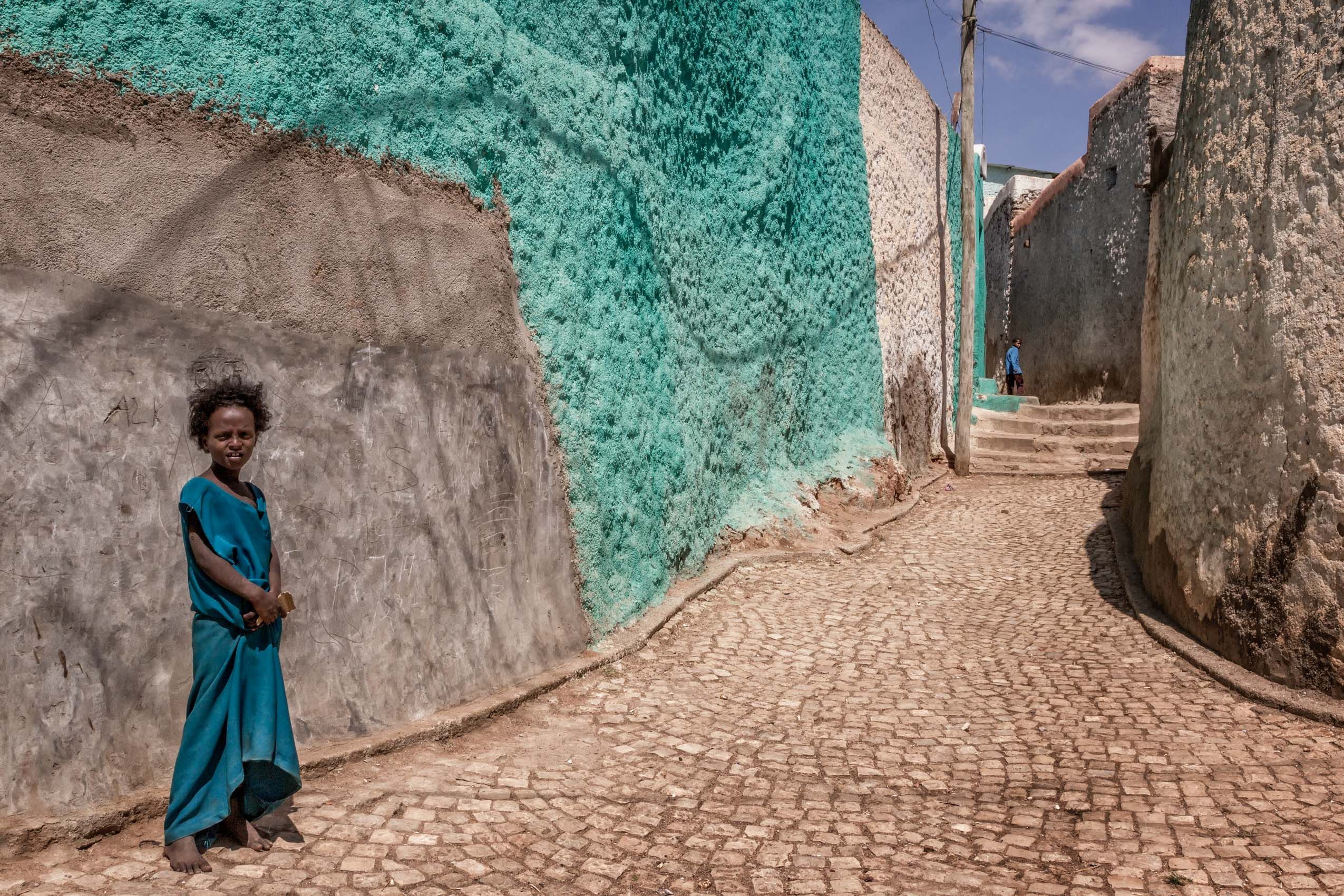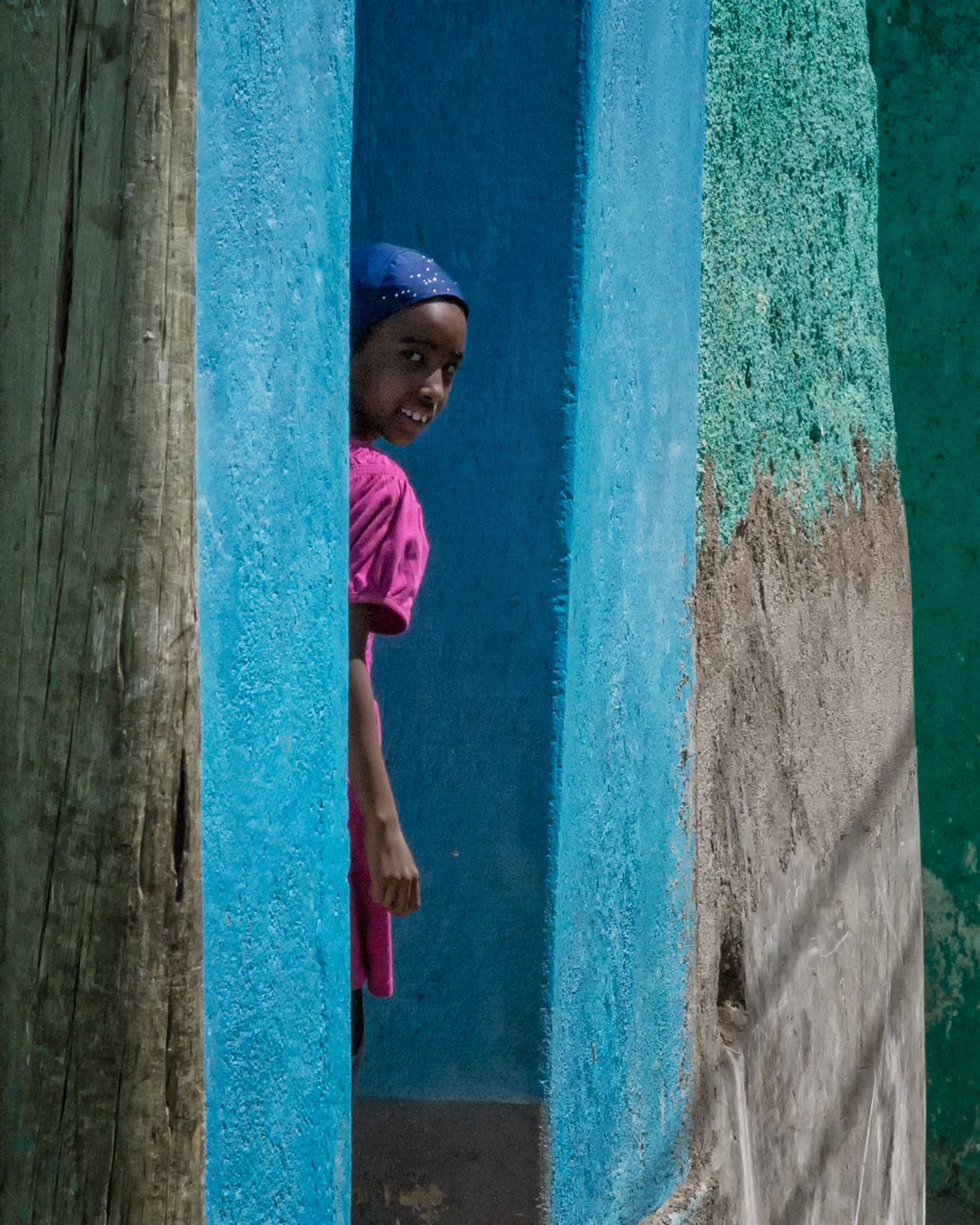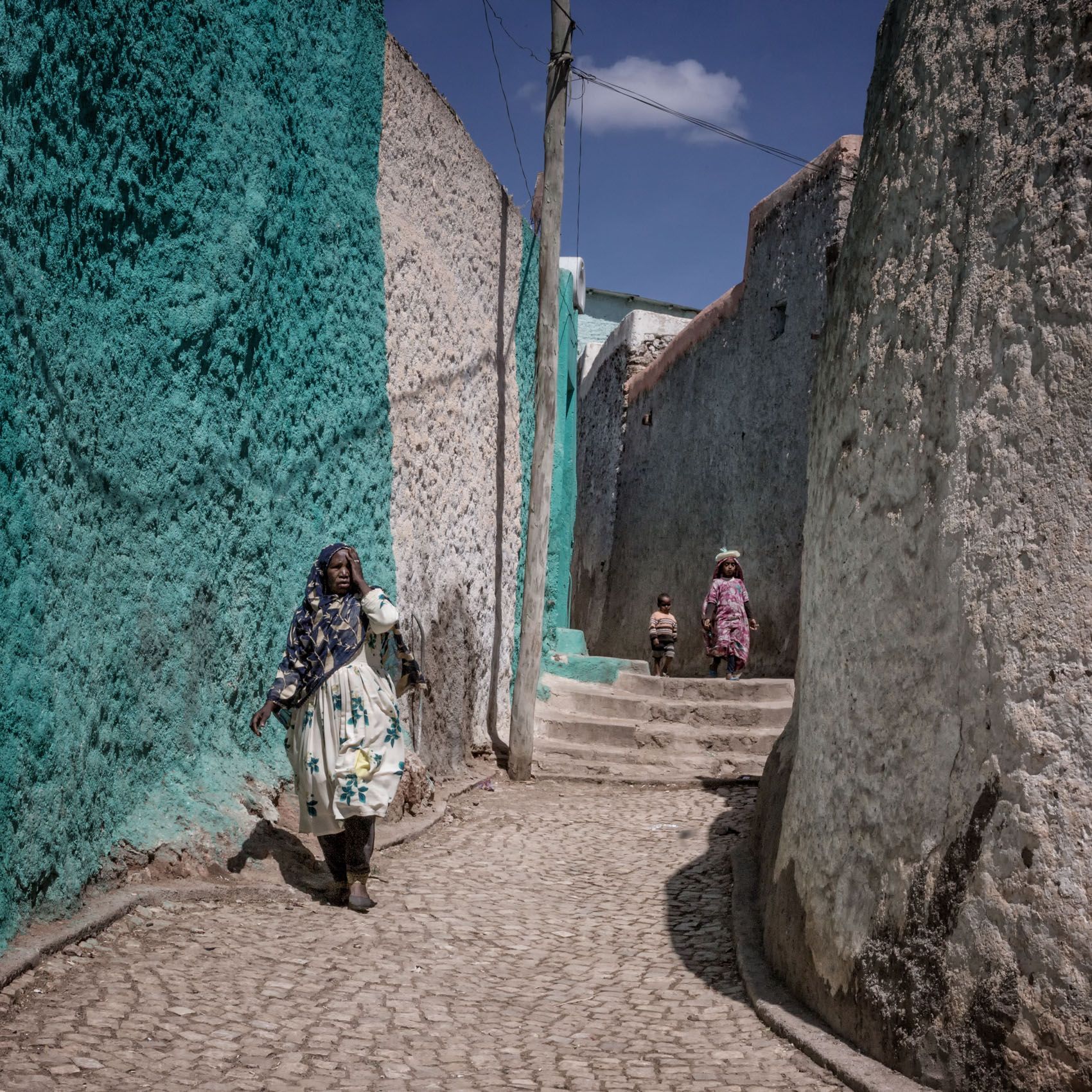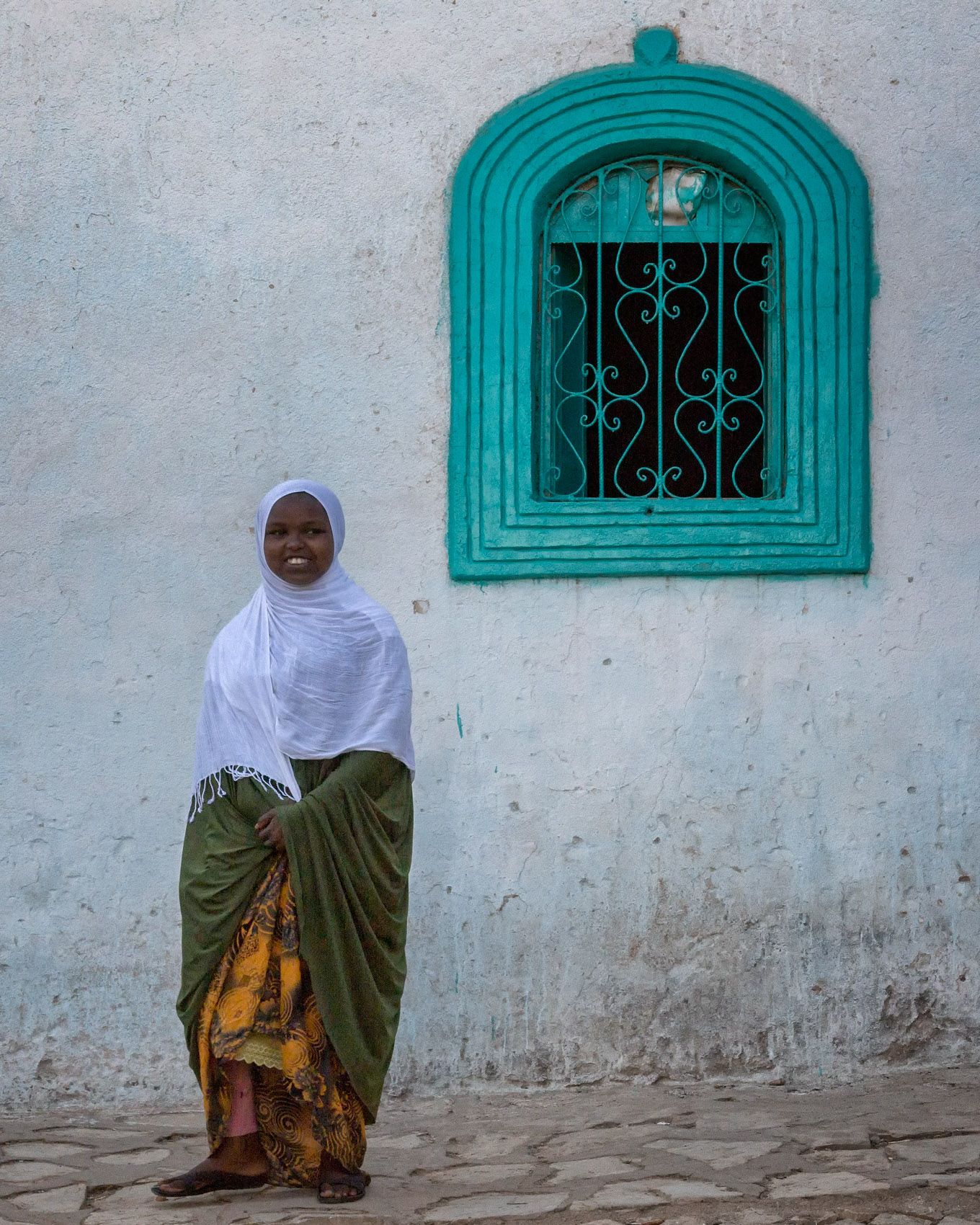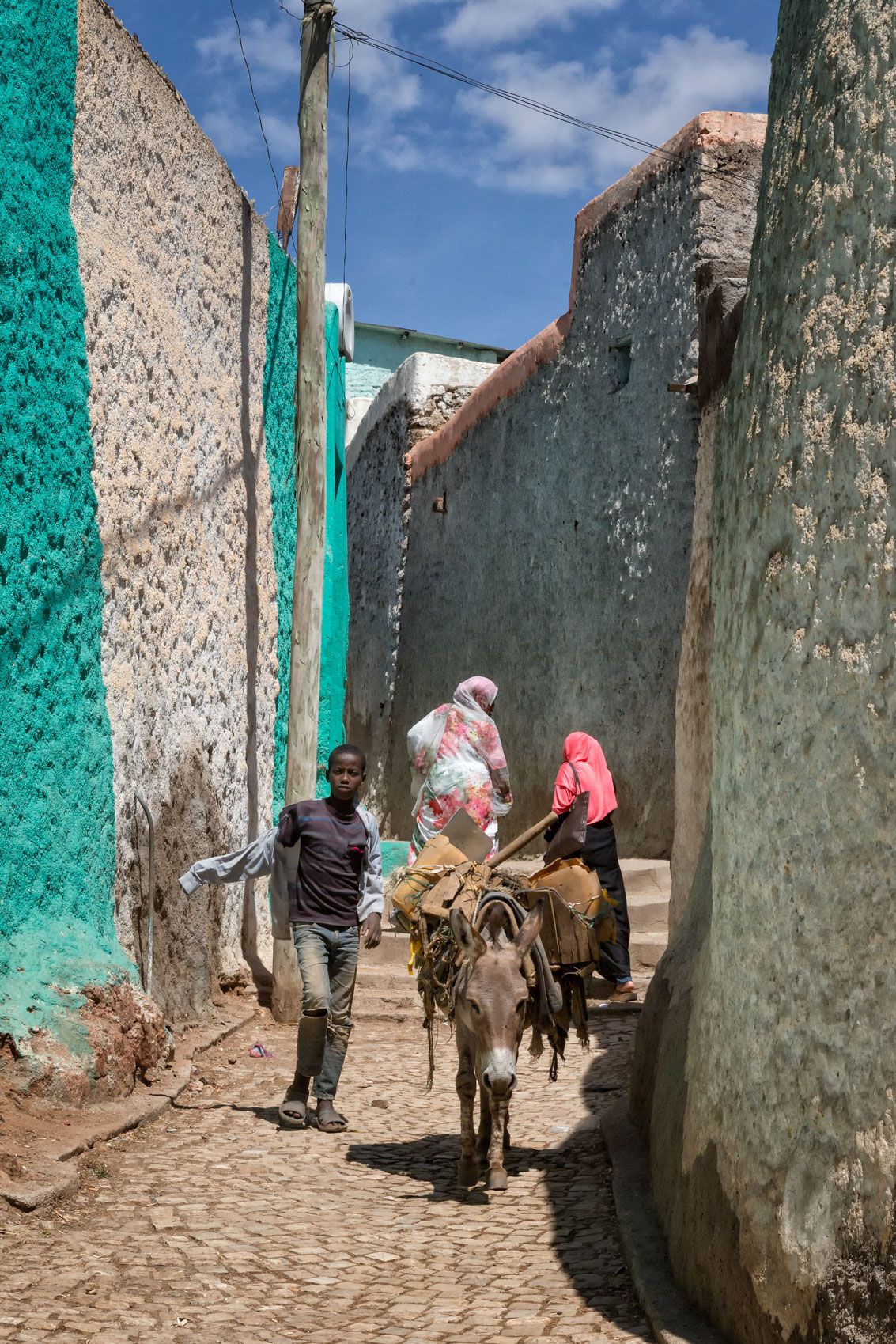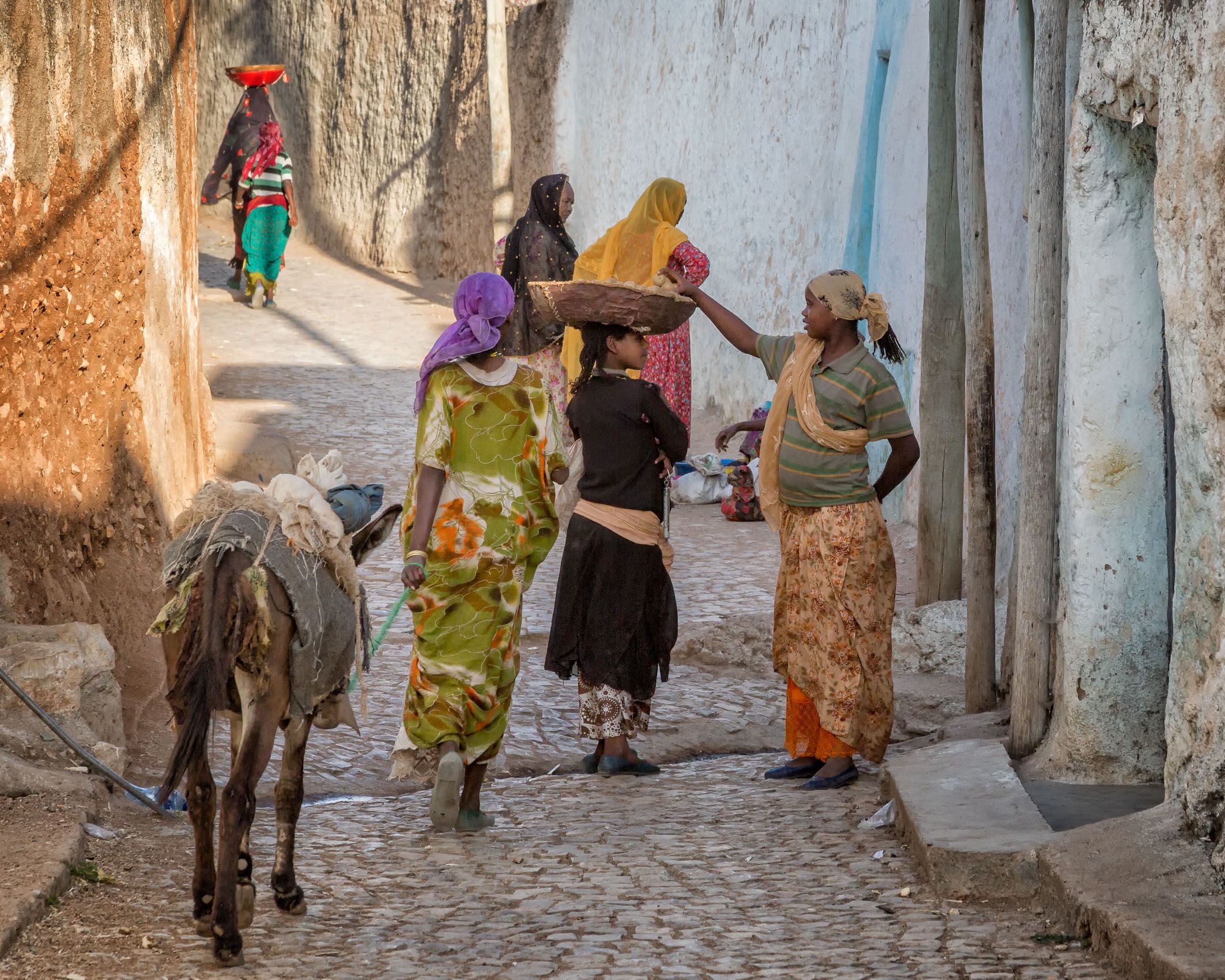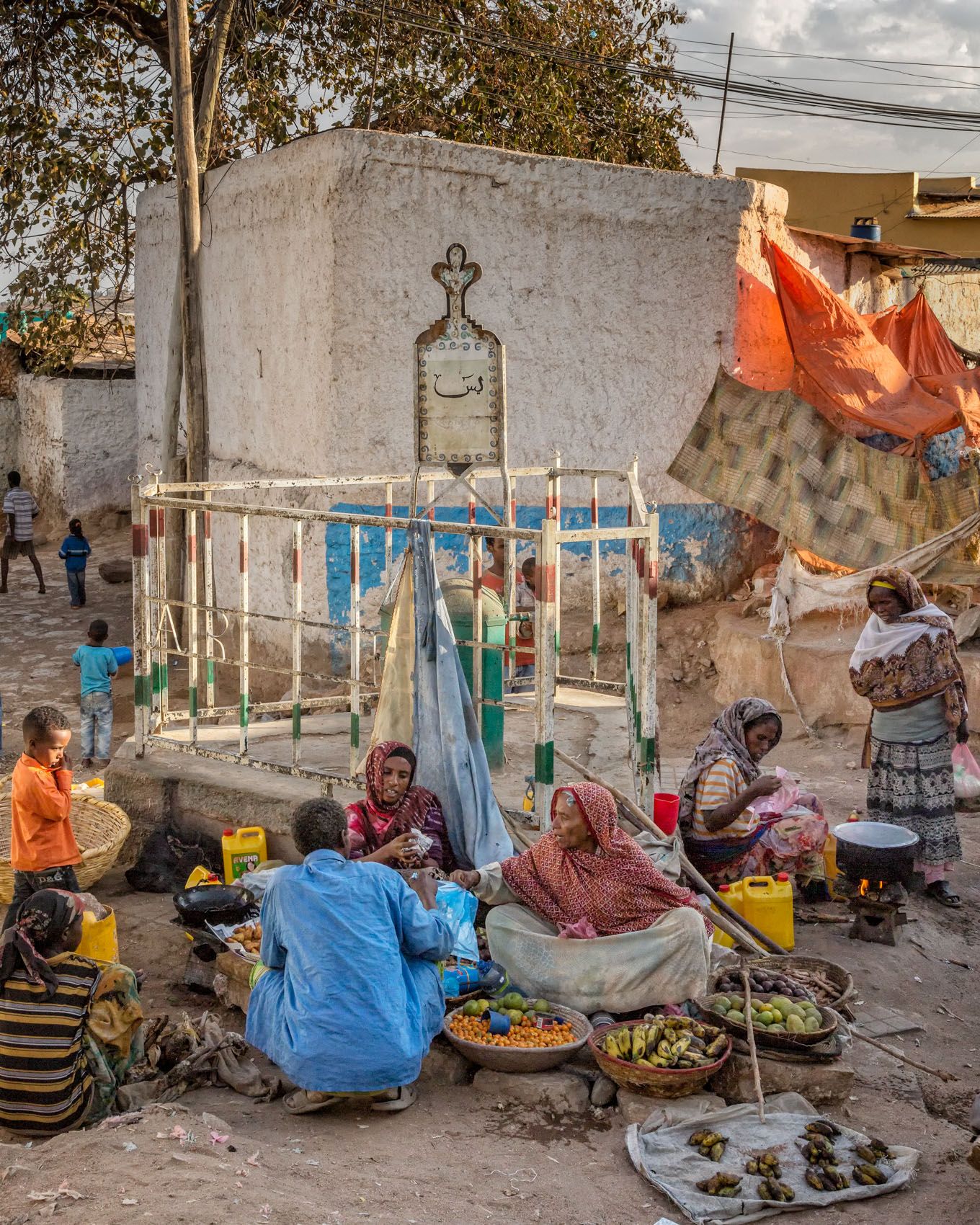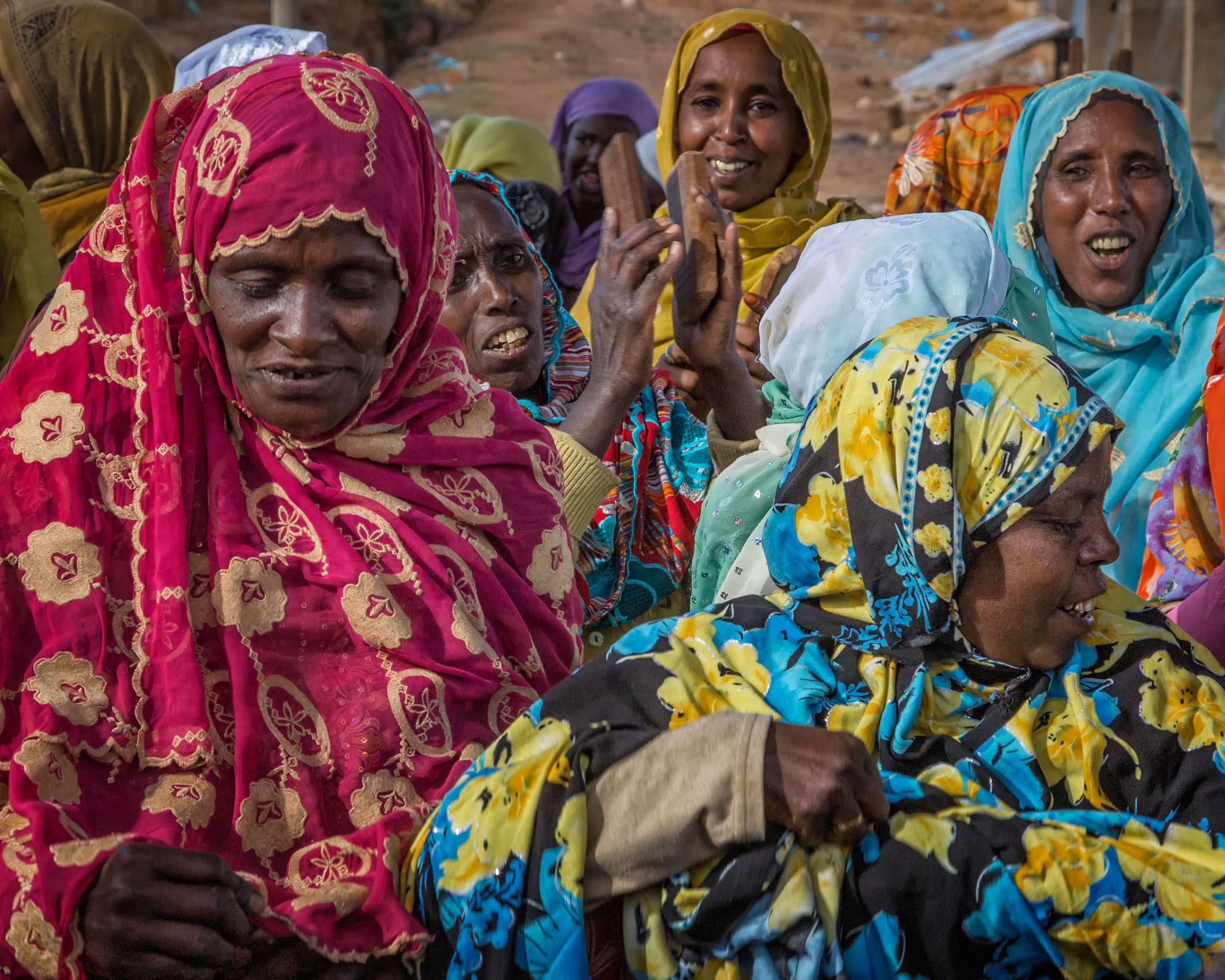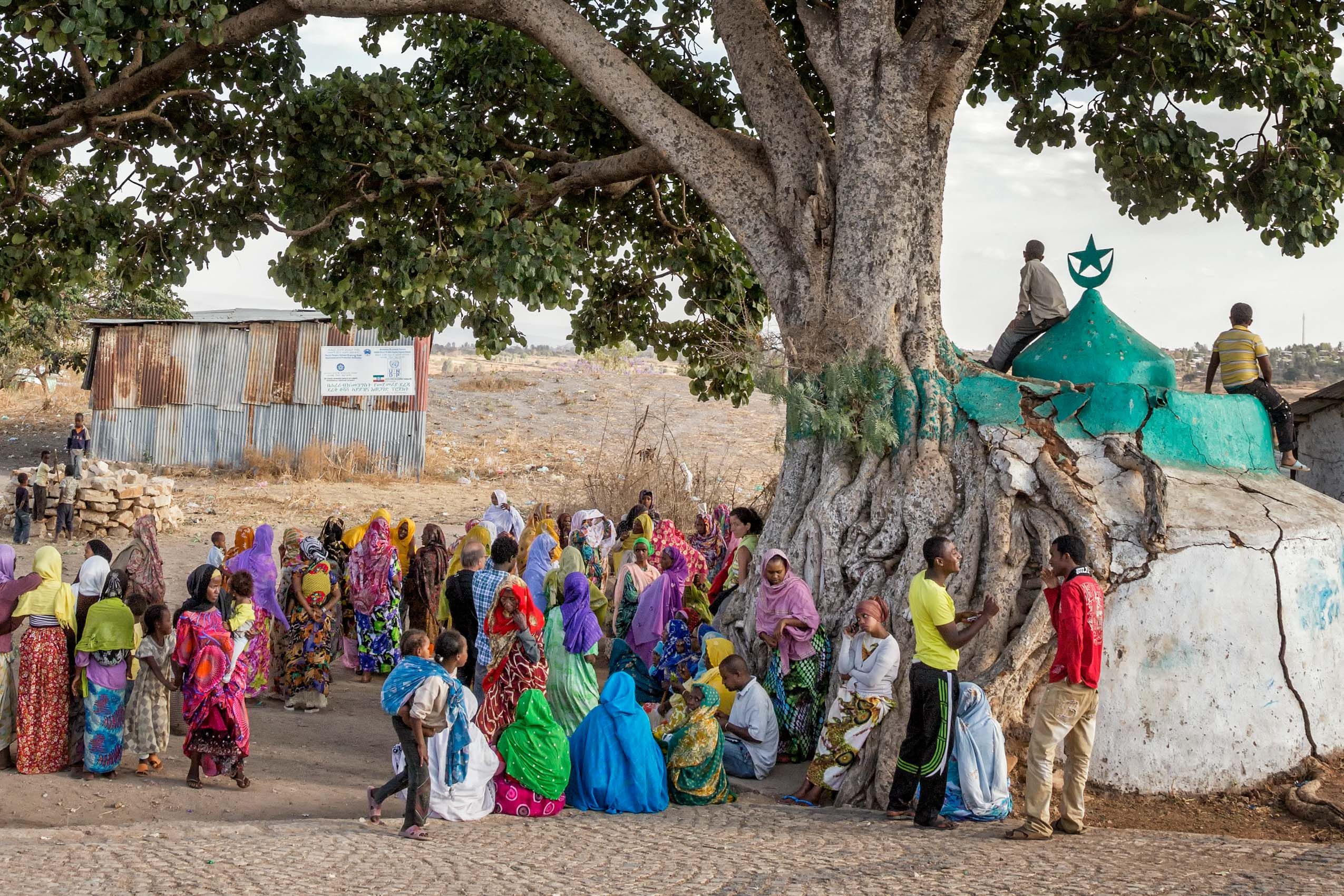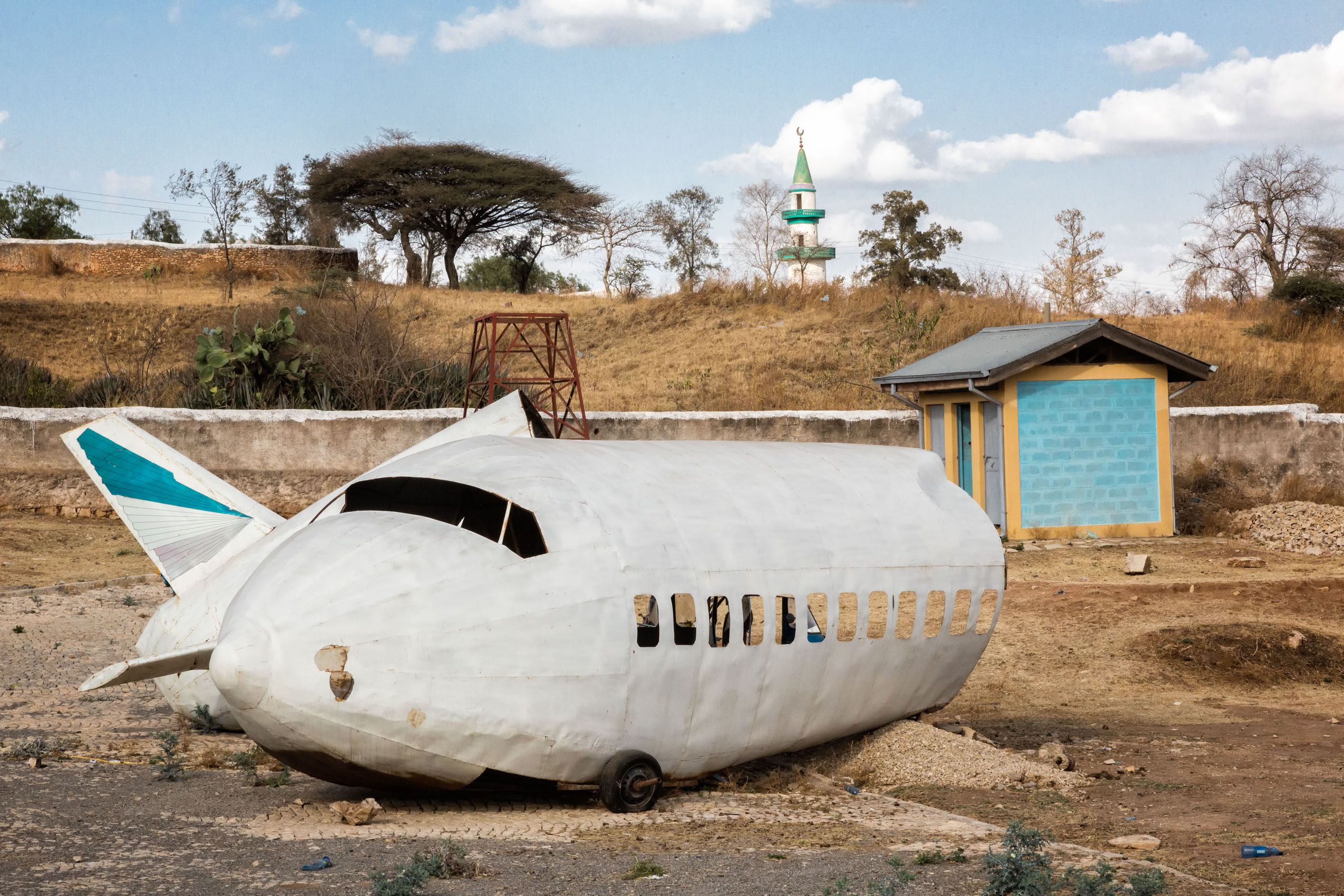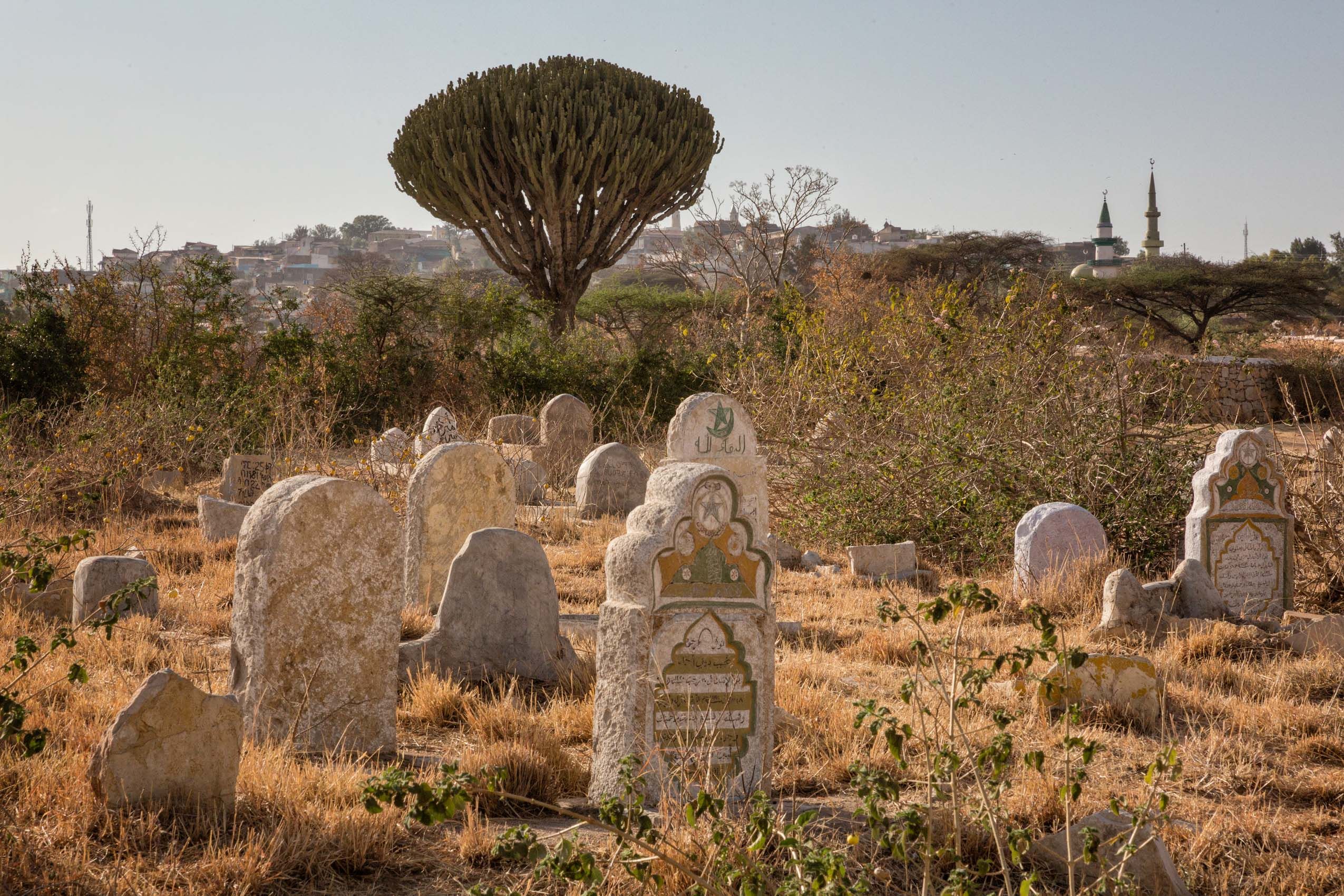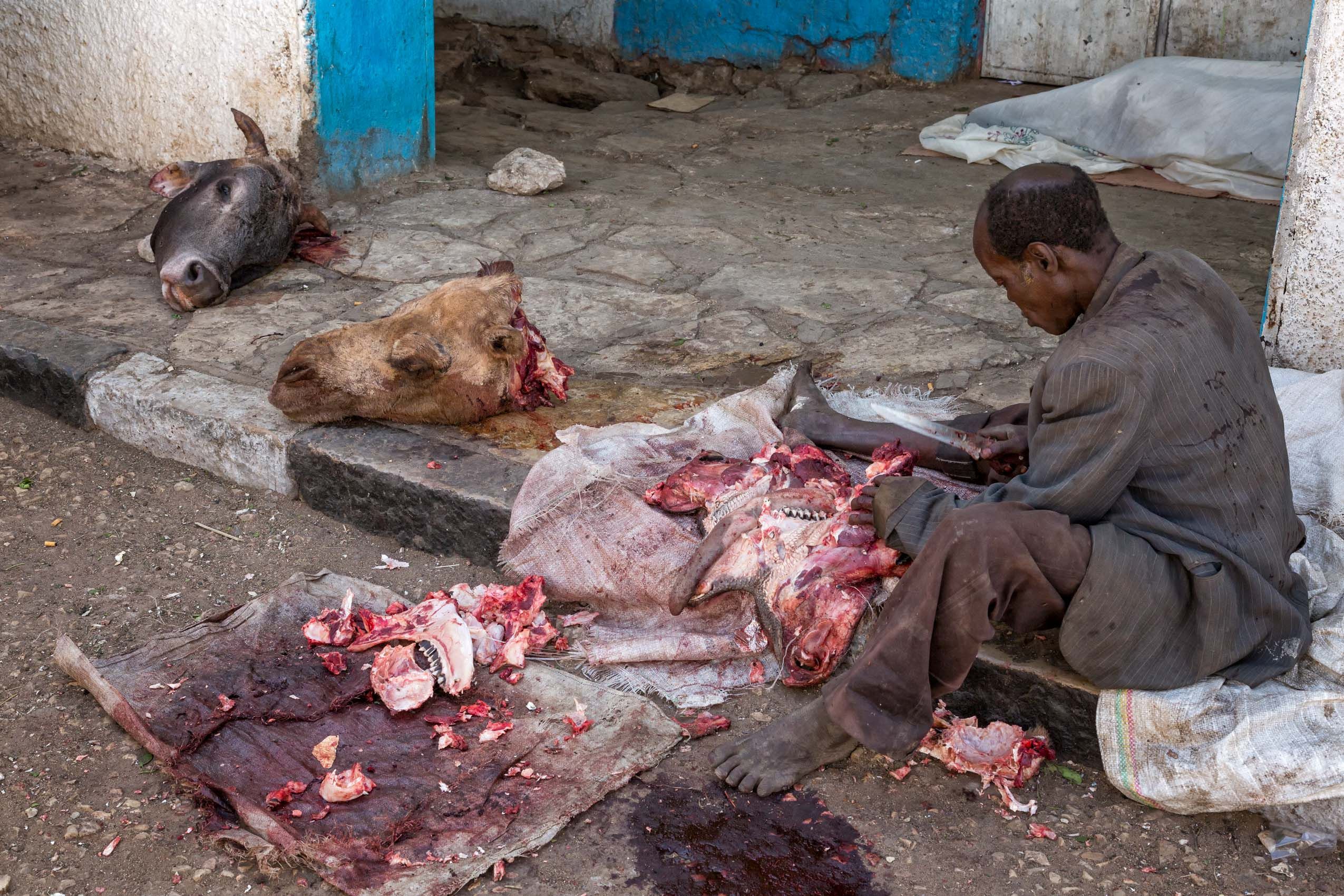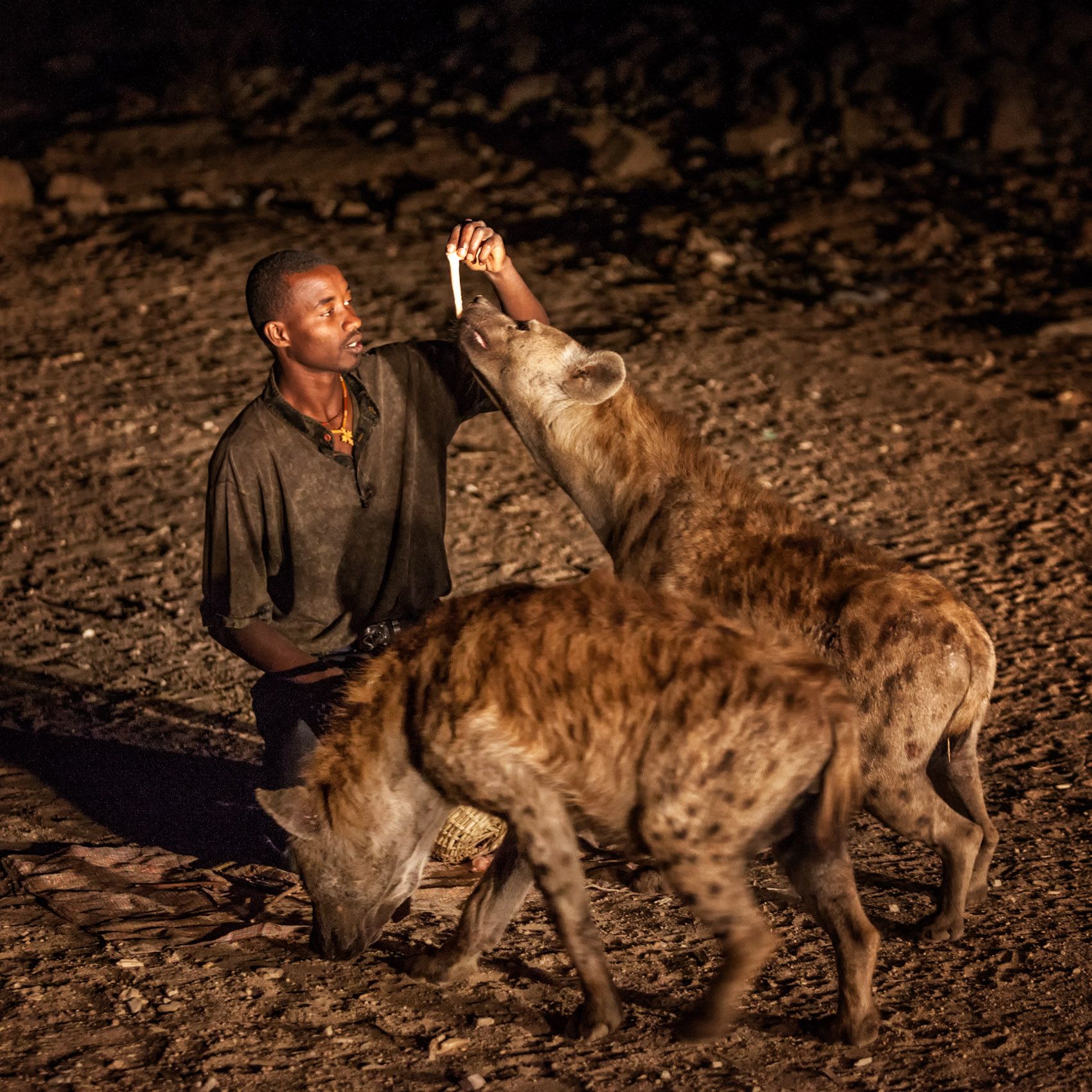ETHIOPIA: Harar, The City of Saints
The old walled city of Harar, located in eastern Ethiopia and about 500 km from Addis Ababa, was by the thirteenth century already established as a major trading city and the center of Islamic culture in the Horn of Africa. Harar was at its cultural and military height in the sixteenth century. It was at this period that the city was enclosed by stone walls for protection. Remarkably, these high and thick walls, punctuated by five great gateways, remain intact today and still circumscribe the old city. It is just outside the walls at night that a tradition of feeding meat to spotted wild hyenas has developed into a major tourist attraction. The old walled city (Harar Jugol) was listed as a World Heritage Site by UNESCO in 2006. Although today the city’s population is mixed both ethnically and religiously, its ambience remains overwhelmingly Muslim but with a very distinctive African character. More than a hundred mosques (a few a milllenium old) and an additional hundred Muslim shrines dot the town, and the walls are brightly repainted annually for Ramadan. It is referred to in Arabic as the City of Saints and is sometimes considered the fourth holiest city in Islam. The British explorer/adventurer Richard Burton was apparently the first non-Muslim to enter Harar, which he did disguised as an Arab merchant in the mid nineteenth century. The French poet Arthur Rimbaud lived here for several years in the later nineteenth century, working as a coffee trader. Coffee was long the foundation of Harar’s commercial vitality but has now been displaced by another natural stimulant, the khat plant, consumed in vast quantities in the Horn of Africa and the Arabian Peninsula.

